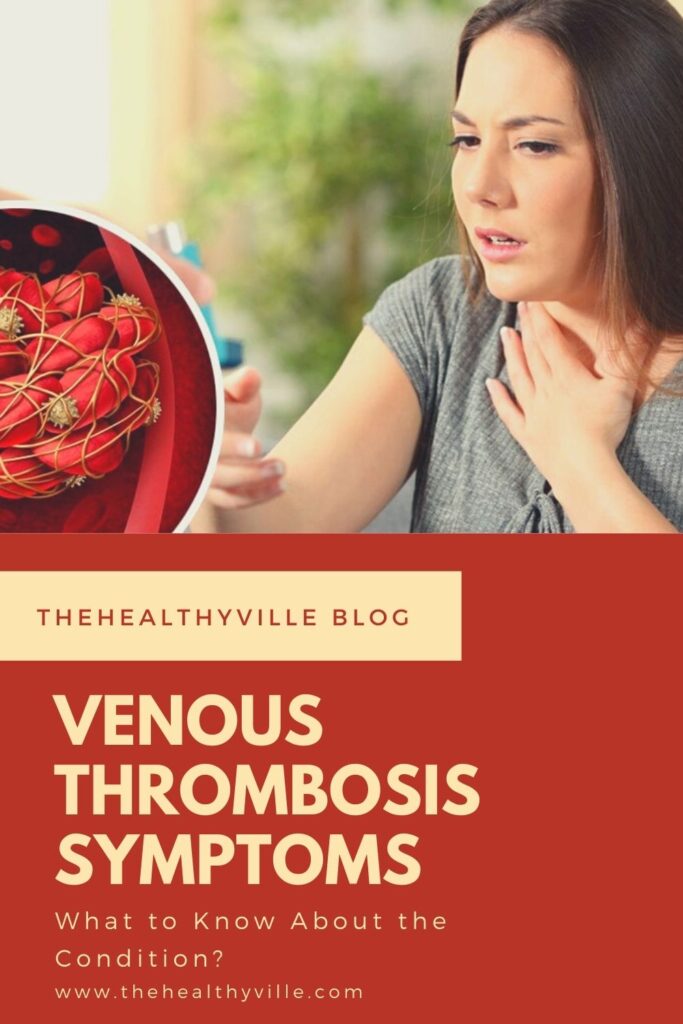Venous thrombosis symptoms may or may not be obvious, so you better learn about them on time. This is a condition that you cannot neglect!
Venous thrombosis in the legs is a serious condition that must be treated in a timely manner. Although sometimes it does not cause obvious symptoms, some manifestations can help detect it.
The appearance of varicose veins in the legs goes beyond an aesthetic problem. Although at first they do not cause physical discomfort, their presence can indicate circulatory problems. In fact, if left unchecked, they can lead to more serious conditions like venous thrombosis.
This disease develops when a blood clot forms that interferes with blood flow. It is more common in people who reach older age. But it can occur at an early age due to the practice of bad habits or hereditary factors.
In many patients it occurs for a long time asymptomatic; however, as it progresses, it triggers complications that can reduce quality of life. Can you identify it? We share the warning venous thrombosis symptoms with you.
What is a venous thrombosis?
Varicose veins are bulging-looking veins associated with venous insufficiency. Treating them requires lifestyle adjustments.
Experts indicate that deep vein thrombosis (DVT) is a disease that can lead to serious complications in the body. It has its origin in the formation of a blood clot in one of the veins located inside the body.
Clots develop from a pool of blood that is in a solid, jelly-like state. Most of the time they are located in areas where circulation is difficult, such as the thighs and calf. However, they can also occur in other areas of the body.
The main risk of this condition is that the thrombus can break off from these parts of the leg and travel through the bloodstream until it reaches, for example, a pulmonary artery. There it can generate a circulatory blockage that leads to what is known as a pulmonary embolism.
Risk factors
People over 55 years of age are at higher risk of venous thrombosis in the legs. Also, you are more likely to suffer from it if you suffer from certain conditions that alter blood circulation. Factors associated with its development include:
- Smoking.
- Having heart failure.
- Suffering from inflammatory diseases.
- Have a catheter placed in a vein.
- Ingesting birth control pills or undergoing hormone therapy.
- Family history of deep vein thrombosis (DVT).
- Suffering an injury that damages the veins, such as a bone fracture.
- Being overweight or obese, which puts more pressure on the veins in the legs and pelvis.
Venous thrombosis in the legs
According to the National Heart, Lung, and Blood Institute, only about half of the people with this condition experience overt symptoms. The rest of the cases usually pass without discomfort.
Superficial vein thrombosis
Superficial vein thrombosis is easier to detect. At first it can be seen that varicose veins increase in size until they become a kind of hard cord to the touch. They are bluish in color and can cause severe pain.
It is also possible to perceive the area very hot and with a feeling of unbearable tension. It is essential to offer them timely care, since they are the first step for a subsequent deep thrombosis and, in addition, it can end in conditions such as phlebitis.
Deep venous thrombosis
It is the type of venous thrombosis that is difficult to identify in a timely manner. Therefore, it is essential to know its manifestations in advance. The following symptoms can be decisive for its detection:
- High pressure in inflamed varicose veins that look like a bluish cord.
- Swelling of the foot, ankle, or leg, usually on one side only.
- Pain and cramps in the affected leg.
- Severe and unexplained pain in feet and ankles.
- One area of the skin feels warmer than the skin in the surrounding areas.
- A tingling sensation, usually one that goes from the leg to the groin.
- The skin on the leg becomes bluish, or even colorless, very pale.
When to consult the doctor?
Deep vein thrombosis is a disease that requires careful attention. Therefore, before any manifestation of your symptoms, it is essential to go to the doctor as soon as possible. The professional will be able to make a diagnosis by reviewing the medical history and doing a physical examination.
If necessary, also suggest additional tests. Once the disease is confirmed, treatment may include medications that thin the blood, compression stockings, and the use of filters. Likewise, it will be essential to improve the lifestyle.
Don’t forget to SHARE the venous thrombosis symptoms with your friends and family on your social networks!

